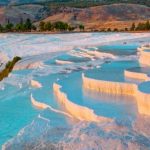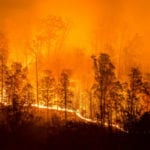 Technology
Technology  Technology
Technology  Humans
Humans 10 Everyday Human Behaviors That Are Actually Survival Instincts
 Animals
Animals 10 Animals That Humiliated and Harmed Historical Leaders
 History
History 10 Most Influential Protests in Modern History
 Creepy
Creepy 10 More Representations of Death from Myth, Legend, and Folktale
 Technology
Technology 10 Scientific Breakthroughs of 2025 That’ll Change Everything
 Our World
Our World 10 Ways Icelandic Culture Makes Other Countries Look Boring
 Misconceptions
Misconceptions 10 Common Misconceptions About the Victorian Era
 Mysteries
Mysteries 10 Strange Unexplained Mysteries of 2025
 Miscellaneous
Miscellaneous 10 of History’s Most Bell-Ringing Finishing Moves
 Technology
Technology Top 10 Everyday Tech Buzzwords That Hide a Darker Past
 Humans
Humans 10 Everyday Human Behaviors That Are Actually Survival Instincts
 Animals
Animals 10 Animals That Humiliated and Harmed Historical Leaders
Who's Behind Listverse?

Jamie Frater
Head Editor
Jamie founded Listverse due to an insatiable desire to share fascinating, obscure, and bizarre facts. He has been a guest speaker on numerous national radio and television stations and is a five time published author.
More About Us History
History 10 Most Influential Protests in Modern History
 Creepy
Creepy 10 More Representations of Death from Myth, Legend, and Folktale
 Technology
Technology 10 Scientific Breakthroughs of 2025 That’ll Change Everything
 Our World
Our World 10 Ways Icelandic Culture Makes Other Countries Look Boring
 Misconceptions
Misconceptions 10 Common Misconceptions About the Victorian Era
 Mysteries
Mysteries 10 Strange Unexplained Mysteries of 2025
 Miscellaneous
Miscellaneous 10 of History’s Most Bell-Ringing Finishing Moves
10 Natural Disasters That Shocked the World in 2024
The year 2024 has seen a horrifying variety of natural disasters resulting in tragic deaths and destruction that have shocked the world. Events, including everything from earthquakes to hurricanes and landslides, have left in their wake grieving survivors and destroyed homes and livelihoods. Of course, natural disasters have afflicted humanity since the dawn of time—but now we have a sinister extra factor to contend with: climate change.
Read on to find out about how so many people have suffered from the catastrophes caused by merciless natural phenomena this year.
Related: Top Ten Lesser-Known Tragic Disasters
10 Noto Earthquake
A powerful earthquake struck on New Year’s Day, heralding a disastrous start to 2024 for the people of the Noto Peninsula in western Japan. NASA’s Earth Observatory reported, “The 7.5 magnitude main shock was followed by dozens of strong aftershocks in the following minutes, hours, and days.” The principal quake struck at 4:10 in the afternoon.
Just to make a bad situation worse, there was heavy snowfall in the immediate aftermath of the earthquake and the resulting fires, hampering rescue efforts. NASA geophysicist Eric Fielding said that some areas of the Noto Peninsula were lifted as much as 13 feet (4 meters). Around 84,000 homes were damaged, leaving a repair bill that may be as high as $17.6 billion, with 14,000 people directly affected by the destruction. And grimly, 281 people lost their lives, with many more badly injured.[1]
9 Spanish Floods
On October 29, as much as 20 inches (51 cm) of rain fell on the southeastern Spanish province of Valencia in just eight hours. Unsurprisingly, this massive deluge resulted in flash floods and devastating destruction. The city of Valencia, which lies on the Mediterranean coast, and the surrounding towns and farmland were heavily flooded, and a total of 216 people died, almost half of them over the age of 70. The rain turned streets into rivers, and cars were tossed aside as if they were toys.
NASA’s Earth Observatory reports that the exceptionally high levels of rainfall “came from a high-altitude low-pressure weather system that became isolated from the jet stream.” This happened when a cold front collided with warm air over the Mediterranean. In the aftermath of the floods, public outrage at a perceived lack of warning and poor response from rescue services spilled over into angry demonstrations. When King Felipe VI and Queen Letizia visited Valencia, angry survivors pelted the royal couple with mud as they toured the streets.[2]
8 Uganda Garbage Landslide
The Kiteezi garbage dump, clearly visible on Google Maps satellite view, is the only place to dispose of garbage in Uganda’s capital city, Kampala. The satellite pictures also reveal the fact that there are homes nestled cheek-by-jowl with the festering mountain of trash, which covers a 36-acre site in the city. Some of the residents of those homes were the victims of a garbage landslide in August when torrential rain caused a substantial portion of the trash mountain to collapse.
Around 1,000 people were forced to leave their homes, but it turns out that by escaping with their lives, they were the fortunate ones, even though many lost everything. Meanwhile, rescuers dug their way through tons of garbage in a desperate effort to locate survivors. A few days after the Kiteezi disaster, the Kampala police announced a confirmed death toll of 35, with 28 people still unaccounted for.[3]
7 Hurricane Helene
Helene, the deadliest hurricane since Katrina 20 years ago, swept in from the Atlantic in late September, making landfall in Florida. From there, it worked its way across Georgia, both Carolinas, Virginia, Tennessee, and Alabama. As it tracked across the southeastern states, it left a terrible trail of destruction in its wake. Rescue and recovery efforts continued for days after Helene had completed its bout of devastation.
More than a week after the hurricane had blown through, the Associated Press reported that more than 230 people had lost their lives in the fearful storm. Those who survived Helene had to cope with widespread power outages, intense flooding, and massive destruction of infrastructure. North Carolina’s Governor Roy Cooper highlighted the ferocious strength of Helene, saying, “We knew storms could cause damage, but we weren’t expecting the magnitude of this one – water raging in rivers all over in a way we’ve never seen before.”[4]
6 India Landslide
In July, it was the Wayanad district in India’s Kerala region on the country’s southwestern coast that experienced just how devastating the forces of nature can be. Torrential rain, 22 inches (56 cm) in two days, caused landslides, and by early August, the grim death toll had risen to 392, with 150 people reported as being missing. The casualties came in small villages on steep hillsides where many of the inhabitants worked on local tea plantations.
The Hindu website told the tragic story of two of the villages that were engulfed by the landslide, Mundakkai and Chooralmala, both places previously best known for their “scenic landscapes and waterfalls.” However, in the massive landslide, which originated in a nearby mountaintop and barreled some 5 miles (8 km) down the course of the Iruvaniphuza River, these two villages were virtually wiped out. Weeks later, the gruesome task of identifying bodies continued, with some of the dead only identified with the use of DNA testing.[5]
5 Indonesian Volcano
Volcanic Mount Lewotobi Laki-Laki on Indonesia’s Flores Island erupted in early November, sending hot ash soaring 6,500 feet (1,981 meters) into the skies. A flow of deadly lava and cascading rocks hit villages on the mountain’s slopes, about 2 miles (3.2 km) from the eruption. The Indonesian Center for Volcanology and Geological Disaster Mitigation called for a complete evacuation for all those living within a four-mile radius of Mount Lewotobi Laki-Laki “due to the ejection of incandescent material.” The evacuation came after ten people had already lost their lives.
BBC News reported that a video shot by people at the scene of the eruption showed survivors “covered in volcanic ash, rock showers and homes ablaze, as well as the scorched aftermath of the disruption.” In fact, there had been considerable advance warning of a likely eruption as Mount Lewotobi Laki-Laki had been emitting clouds of smoke and ash since December 2023. As a result, many people had previously left the area or the casualty level would almost certainly have been higher. [6]
4 Typhoon Yagi
Typhoon Yagi raged across several Asian countries in early September, including Laos, Thailand, and Myanmar, but Vietnam was the worst affected country. The overall death toll of Yagi was 600, with 42 fatalities in Thailand, 242 in Myanmar, and 300 in Vietnam. The majority of the casualties were caused by flash floods and landslides resulting from the extreme rainfall that Yagi brought to the region. The Center for Disaster Philanthropy (CDP) reported that there were “still people missing who are presumed dead.”
CDP cited the case of one especially tragic incident in the Vietnamese village of Lang Nu in Lao Cai province. There, the torrential rain caused a landslide, which overwhelmed the hamlet’s population of 158. At least 48 of the villagers lost their lives, while a further 17 were injured. Some 39 were missing and assumed to be dead, so that less than half the people of the village had survived to tell the horrifying tale. As well as a high death toll overall, Vietnam also suffered the destruction of around 237,000 homes.[7]
3 Drought in Zambia
A severe drought got underway in the African nation of Zambia in January 2024, and the following month, the African country’s president, Hakainde Hichilema, declared an official national disaster. The United Nations has said that the landlocked South African nation experienced the worst water shortage during the growing season in three decades. This has caused food shortages in Zambia, but it’s not just the agricultural sector that has been damaged.
Up to 80% of Zambia’s electric power is generated by one hydroelectric scheme, the Kariba Dam, with its mighty 420-foot (128-meter) wall creating the world’s largest man-made lake. But thanks to the drought, water levels have fallen too low to power the turbines fully, severely curtailing the electricity supply. In November, the Guardian reported that the drought continued with no sign of rains, and that meant the Kariba generator might have to close altogether. Already, Zambians are reduced to just three hours of electricity each day.[8]
2 Ethiopian Landslide
It was on July 21 and 22 that two massive landslides, triggered by torrential rainfall, engulfed several Ethiopian villages in the Gofa Zone region. Within a couple of days of the catastrophe, the death toll stood at 257, with the UN warning that the total number of fatalities was likely to increase to perhaps as high as 500. Some 15,000 people were evacuated from the Kencho Shacha Gozdi district as further landslips were a distinct possibility.
Harrowing reports emerged of survivors desperately digging through deep mud with their bare hands in an effort to find those buried by the disastrous landslides. Speaking to Agence France-Presse, survivor Tseganesh Obole told how she and her six children had been buried in the mud. Although she had escaped with two of her youngsters, a distraught Tseganesh explained that “four of my children died and remained buried.”[9]
1 Las Vegas Heat Wave
Las Vegas residents know that summer inevitably brings high temperatures that can be hard to bear. But the heatwave that baked the city in 2024 was way beyond normal. During the three summer months—June, July, and August—the average daily temperature was 96.2°F (35.7°C), the hottest summer Las Vegas has experienced since records began in 1937. Weather service meteorologist Morgan Stessman told the Las Vegas Review-Journal that, “We blew [the summer] record out of the water.”
In December, the Las Vegas Review-Journal reported that the Clark County coroner’s office had confirmed that 491 deaths could be attributed to the exceptionally hot summer, up from 309 heat fatalities in 2023. Grimly, the coroner’s office also pointed out that nearly all of those killed by heat and aged under 40 had a contributing cause of death of drug or alcohol abuse.[10]








